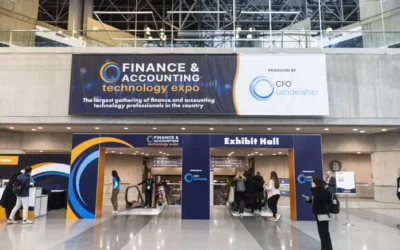The following is a guest post from Michael Thompson, principal, R&E Tax Credits at Ryan. Opinions are the author’s own.
The One Big Beautiful Bill Act’s restoration of immediate expensing for domestic R&D expenditures on July 4, 2025, after only three short years of forced capitalization and amortization, represents more than a return to previous tax rules. It is definitive action reinforcing clear legislative intention to incentivize businesses of all sizes to make those incremental investments here at home, which will ensure the country is poised to continue its place as a technology leader in an ever-expanding global economy.
More than that, the prompt reinstatement of this incentive breathes renewed life into discussions created by the original changes to Internal Revenue Code Section 174 regarding what constitutes research and development for tax purposes. It will hopefully continue to close a critical gap in business understanding: R&D qualification goes well beyond white lab coat and patent-level research and development. To properly understand the business tax implications, we first must establish the impact of the OBBB on R&D expenditures.
More than one big beautiful opportunity
Section 174A restores immediate expensing for domestic R&D activities, starting with tax years after Dec. 31, 2024, while foreign R&D expenditures must continue to be amortized over 15 years. This returns taxpayers a compelling incentive for U.S.-based R&D activities.
Additionally, all businesses can choose to accelerate the deduction of remaining unamortized domestic R&D expenses from 2022 to 2024, either entirely in the first tax year beginning after Dec. 31, 2024, or ratably over the following two years. This flexibility helps optimize the timing of deductions based on tax position.
For small businesses with average annual gross receipts under $31 million over the prior three tax periods, the OBBB provides exceptional retroactive relief. These companies may elect to recapture unamortized R&D costs dating back to tax years after Dec. 31, 2021, by amendment, but must do so in a relatively short period.
With these changes to domestic R&D expensing in the OBBB, companies should carefully review the variety of options available to them, considering the impact on net operating losses, tax credit utilization, and potential carry-forward situations. While Section 174A restores immediate expensing as the default treatment, businesses retain flexibility to elect capitalization and amortization over periods of 60 months or 10 years if that better aligns with their tax planning strategies.
The hidden qualification reality and tax credit eligibility
After spending over two decades in R&D tax consulting, I’ve noticed one misconception that still pervades just about every introductory conversation on the subject. When business leaders hear research and development, they immediately think of things like lab coats, test tubes, patents and artificially intelligent humanoid robots. And, while developments from activities incorporating these elements very often indicate the existence of tax-related R&D activities, one thing the change to required capitalization and amortization under Internal Revenue Code Section 174 in 2022 should have taught us is that they represent just the tip of the iceberg of evidence that can support the presence of efforts qualifying as R&D under tax law.
For the past 44 years, the credit for increasing research activities in Section 41 of the Internal Revenue Code has provided a dollar-for-dollar reduction in tax derived directly from some of the very same types of expenses the law change in 2022 required to be capitalized and amortized.
Qualifying R&D tax credit activities encompass organized efforts to develop products, processes, formulas, techniques, software or inventions that are new to the company or represent improvements over previous methods employed. Critically, businesses are not required to survey their global competitive landscape to determine uniqueness or novelty — the standard focuses on internal innovation and improvement efforts.
Additionally, where it can be demonstrated that these businesses employed a process for evaluating alternative methods or designs to overcome the inherent technological challenges faced during the development of these items, the wages, supply costs, contractor payments and cloud computing expenditures incurred to do so are likely credit eligible.
Software development: The universal gateway
For example, Section 174A explicitly treats any amount paid or incurred for software development as a research and experimental expenditure. Because virtually every modern business operates like a software company in today’s digitized environment, this is particularly important — especially when you consider the scope of qualifying software activities often includes internal-use software development, back-office system improvements, the creation or improvement of warehouse management software, the development of customer-facing applications, database enhancements and designing process automation tools and business intelligence systems.
Even website-related development may qualify if, for example, it enhances inventory management or customer relationship systems or involves solving technical problems through a structured approach. It does not take much to recognize these very same types of development activities as also potentially credit eligible, and to provide not only more than renewed deductions to decrease taxable income, but also a head start on the identification of credits to attack any remaining tax due directly.
In addition to traditional software development, AI development and implementation create significant R&D opportunities as companies design solutions which enhance or improve the efficiency, reliability or functionality of existing systems. As AI capabilities advance, activities that previously required time-consuming manual input could be accomplished in a fraction of the time. Arguably, this raises the interesting question of how tax credit qualifications could change once AI-driven R&D becomes a more viable alternative to a human-driven approach, but for the time being, strategic timing favors companies that can maximize current R&D benefits while developing AI capabilities that require substantial human involvement.
Industries that should pay attention
It is not just software companies that should leverage the knowledge gained from previously required capitalization and amortization changes by the OBBB. Manufacturers improving products or related production processes, food development and packaging companies, retail businesses optimizing warehouse logistics equipment and design-build and value-add construction and engineering companies, amongst many others, should be reevaluating day-to-day achievements to determine whether they represent potential qualifying R&D activities.
The combination of the restoration of immediate expensing and retroactive relief provided to small businesses in the OBBB is both an exciting and overdue change to the tax code. But, companies should not stop there and instead use the knowledge gained over the past three years regarding the breadth of R&D as the tax code defines it and employ the same to claim credits for those activities that once caused such consternation.





